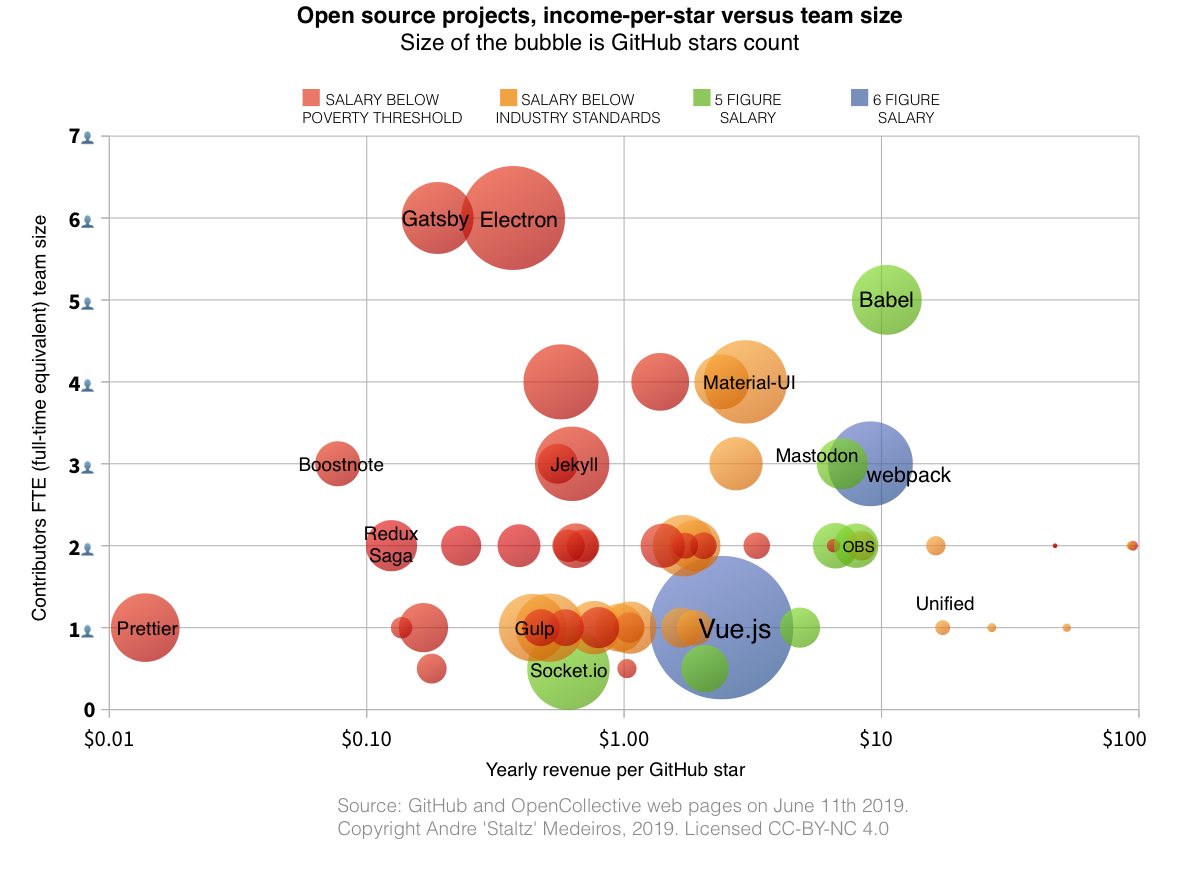
Software below the poverty line

Open source projects, the infrastructure of digital public goods, have long relied on unsustainable funding sources like Github Sponsors, Open Collective, or Buy Me A Coffee. Besides the very few that have reached commercial success by transforming into enterprise SaaS, the vast majority of projects failed to find adequate funding.
Tina He • [FKPXLS] The New Frontier of Belonging
A number of monetisation models for open-source work have been put forward in the last decade, but none of them has been able to scale and solve the problem in a fundamental way. The reason being, open-source work is a microeconomic singularity — a paradox in capitalism that can’t be corrected with donations, cryptocurrencies, or freemium models.... See more
Rodrigo Mendoza Smith • Devs have eaten the world
Like the idea that open source software just isn’t “sustainable”. That unless we somehow find a new way to force users to “give back” (i.e. pay/donate!), we’re going to burn out people who donate their “free labor”, but won’t do so forever.